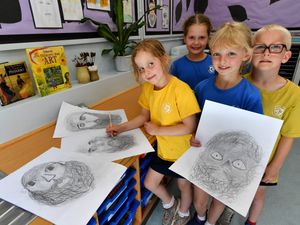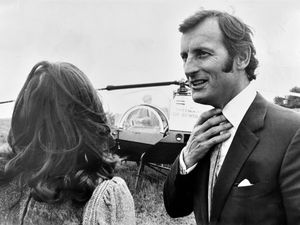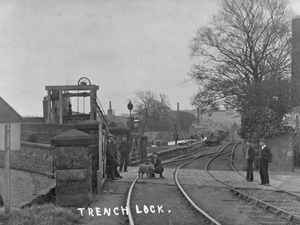Golden memories of Wolverhampton airport
When the chapter finally closed 50 years ago on an illustrious period of Wolverhampton aviation history, it did so without fanfare or ceremony.
If anything was done to mark the closure of Pendeford airfield on December 31, 1970, we can't find any mention of it in the contemporary Express and Star.
The aerodrome, a place of wonder, drama, excitement, and occasional tragedy which had opened in June 1938, seems simply to have faded away, and is now built over by industry and housing.
Yet still the memories endure. And so thank you to 75-year-old David Orton, who lives near Penkridge, for sharing his reminiscences.
"In 1964 I was working for Yale and Towne in Wednesfield, and applied to the airport for a part-time job, evenings and weekends, and after a short interview with Mr Holden, the manager, began immediately doing odd jobs around the site," said David.
"It was a legal requirement that at least four people were on site for safety cover to allow flying to continue, and I was there to make up the numbers on one or two evenings after work, and on either Saturday or Sunday.
"Manning the crash tender was one of the duties, and three incidents stick out in my mind."
One was a parachuting demonstration which went wrong in 1965.
"Some of the team landed on house roofs after jumping in difficult wind conditions. We drove out of the airfield and tried to reach the site but due to the numbers of vehicles parked in the lanes as sightseers watching the air show free, by the time we reached the area the fire brigade and police had already done all that was necessary to help the injured and were awaiting the ambulance. All we could do was to return to the airfield.
"The second incident I remember happened when a Piper Cherokee tried to take off, but due to carburettor icing failed to produce enough power to achieve lift-off and it crashed through the perimeter railings, and ended up on the far bank of the canal, half on the towpath, and half over the water.
"Again we trundled off in the crash tender, but instead of following the perimeter path tried driving straight over the field. Unfortunately our speed across the rough grass was very slow, and we found that people on foot were overtaking us with ease, and by the time we reached the canal several people, including one of the flying instructors had waded across, and had helped three of the passengers out of the aircraft.
"The fourth, a young woman, had injured her back, and was advised to stay where she was until the ambulance arrived.
"The third time we had to attend a forced landing at the back of the former Boulton and Paul factory. A Tiger Moth, G-ANCX I think was the registration, had just been serviced, and on its first flight the propeller end cap, or spinner, became loose, came off, and was hit by the propeller and several inches of the wooden end were broken off. The aircraft became unflyable due to the vibration, so was throttled back and came down in a newly ploughed field, unfortunately across the furrows!
"No-one was hurt, and the aircraft was soon recovered for repair and checking over.
"I enjoyed my time there. The work was interesting and varied. Apart from pushing out the club aircraft at the start of each day, fuelling them up, and taxiing them out onto the field for the first lessons of the day, there were old Nissen huts to reroof full of wartime spares. Some of the packages held handwritten notes from the girls that had made or packed them.
"At times I was offered a flight after a periodic inspection. There were also the boring repetitive jobs too – painting the perimeter fence at the end of each runway was the worst!
"A few names I remember – Phil Sherratt comes to mind, a very cheerful, and tall young engineer; Malcolm, who lived on site in a caravan, with his family, and who drove a Rolls-Royce with yellow wheels; the foreman (sorry I have forgotten his name) who was very pleasant and supportive of his staff.
"All in all I really enjoyed my work there. I used to travel in from Yale at around 5 in the evening on an Ariel VB motorcycle and sidecar, and ride home after dark to my home in Great Wyrley. Great fun."





